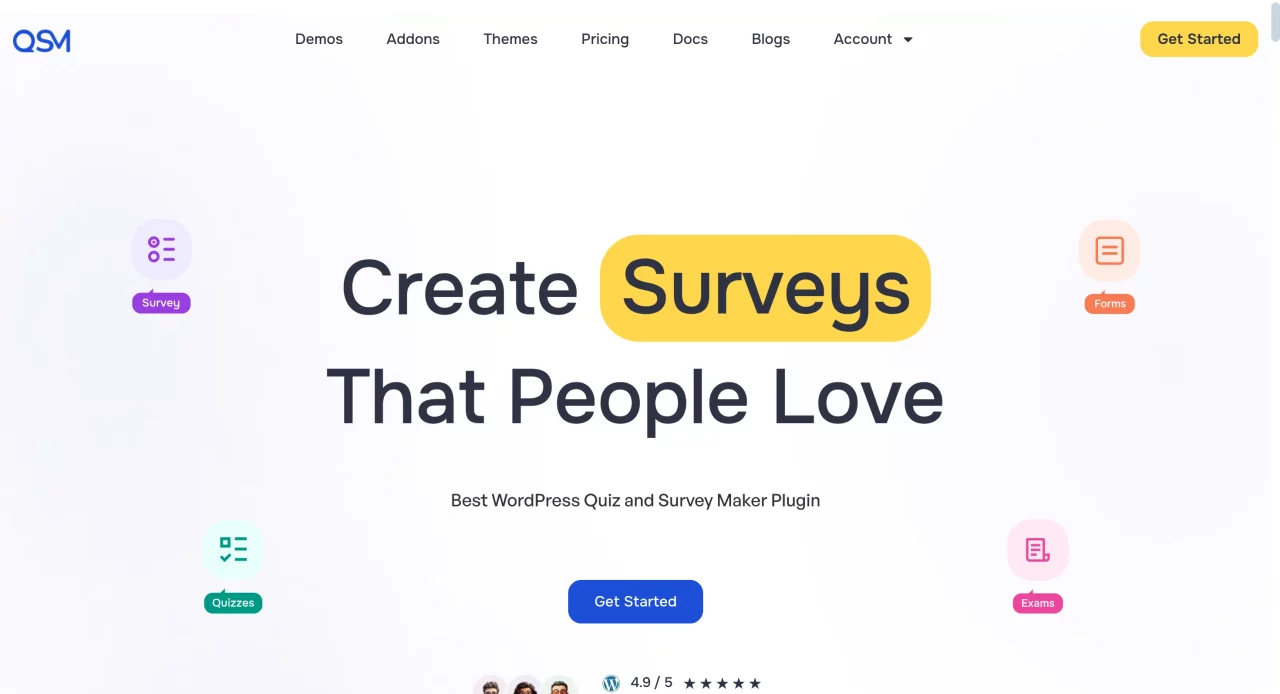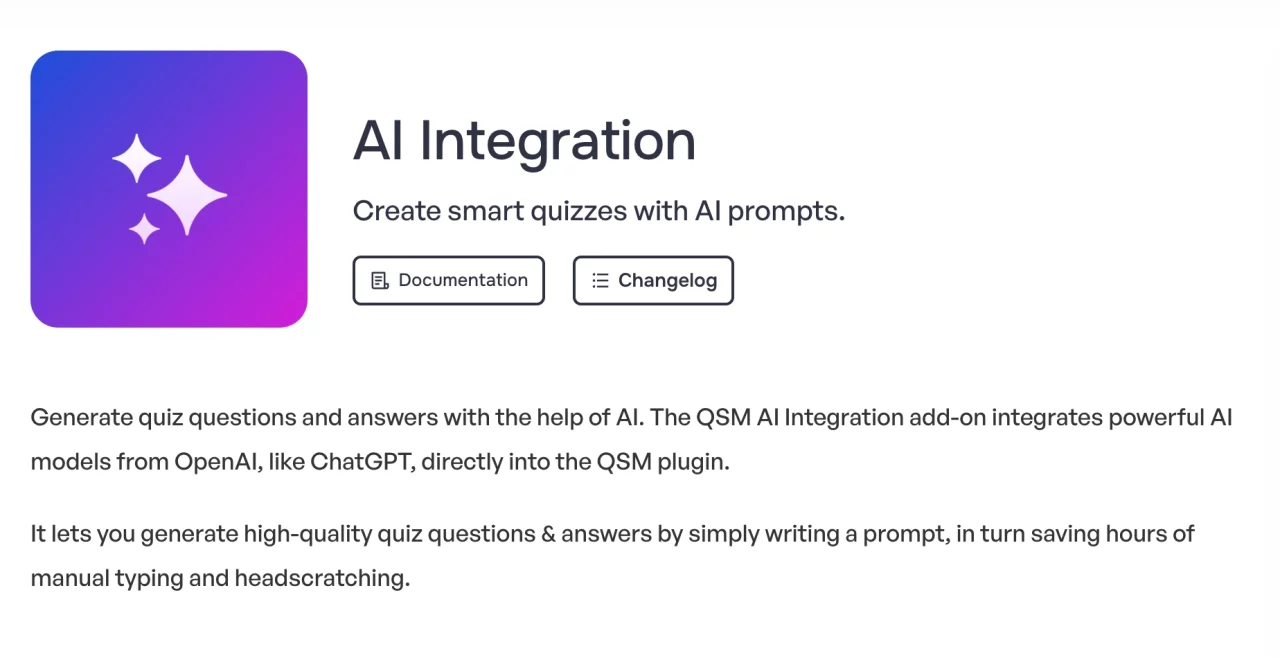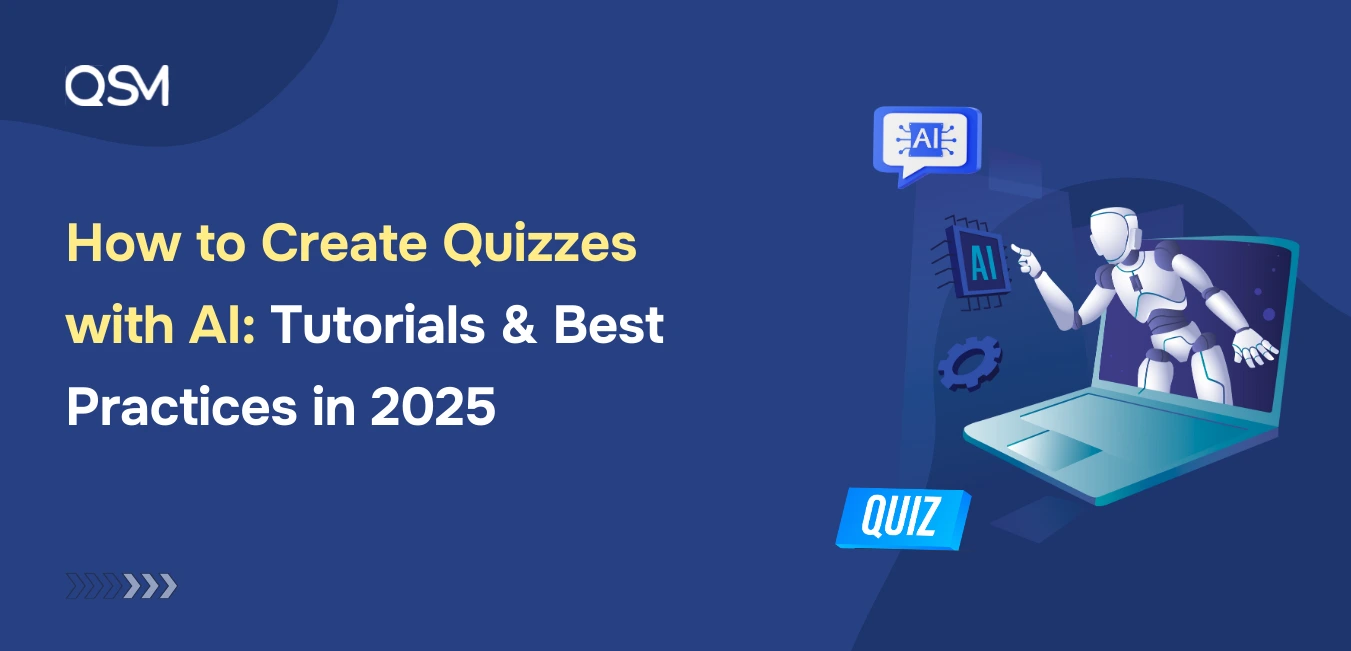Quizzes have always been one of the most engaging ways to test knowledge, capture leads, and boost interaction. But in 2025, the process has evolved. Instead of manually brainstorming questions, structuring formats, and spending hours refining content, you can now create quizzes with AI. AI-powered quiz tools allow you to generate accurate, personalized, and engaging assessments in minutes, saving time while improving quality.
In this blog, we will walk through the step-by-step process of how to create quizzes with AI, highlight best practices, and show you how tools like Quiz and Survey Master (QSM) make the entire process seamless.
Table of Contents
Why Use AI for Quiz Creation?
Creating quizzes manually takes time: brainstorming questions, checking accuracy, and formatting everything for a good user experience. Creating quizzes with AI changes this process completely. With just a few prompts, you can generate structured, ready-to-use quizzes in seconds. This makes quiz creation faster, more efficient, and scalable for teachers, marketers, and businesses alike. In short, using AI does not just save time; it enhances the quality and reach of your quizzes.
Traditional vs AI-powered quiz building
Traditionally, creating quizzes required manual research, writing, and formatting. While effective, the process was slow and prone to errors or inconsistencies. In contrast, AI-powered quiz building uses natural language processing to instantly generate structured questions and answers from your prompts. This shift reduces effort significantly and helps educators, marketers, and trainers create quizzes with AI at scale.
Key advantages
- Speed: Generate entire quizzes in seconds.
- Variety: Create quizzes with AI in multiple formats, including multiple-choice, true/false, fill-in-the-blank, or scenario-based questions.
- Personalization: Adjust tone, difficulty, and subject matter for specific audiences.
- Scalability: Duplicate or modify quizzes quickly for different learners or campaigns.
- Consistency: Maintain a uniform structure and style across all quizzes.
- Engagement: AI can suggest interactive elements like hints or explanations that boost learner involvement.
- Localization: Quickly adapt quizzes into multiple languages for a global audience.
- Data-driven insights: AI-powered tools can analyze results and suggest improvements for future quizzes.
- Accessibility: Many AI quiz tools automatically format quizzes for mobile and web use.
Getting Started: Tools & Setup
The first step to create quizzes with AI is selecting the right tool. Not all platforms offer the same features, so it helps to evaluate your options carefully. When choosing an AI quiz builder, consider:
- Ease of use: Does the tool allow you to generate questions without complex setup?
- Customization: Can you brand the quiz with your own fonts, colors, and layouts?
- Integration: Does it connect with your website, LMS, CRM, or email marketing platform?
- Scalability: Can it handle multiple quizzes, varied formats, and different levels of complexity?
- Support for AI: Some tools only offer manual quiz building, while others integrate AI to generate questions instantly.
There are many AI quiz builders available today, from standalone SaaS products to plugins. If you are already using WordPress, Quiz and Survey Master (QSM) stands out as a powerful choice because it combines traditional quiz-building flexibility with AI-powered question generation. You get the best of both worlds: full control over design and seamless automation for speed.

Once you have chosen your tool, setting up is straightforward. For QSM users:
- Install the plugin on your WordPress site.
- Enable the AI integration add-on.
- Connect your account to activate AI-driven question generation.
With setup complete, you are ready to build and create quizzes with AI that deliver results.
Also read, Best AI Quiz Makers for Teachers in 2025.
Step-by-Step Tutorial: How to Create a Quiz with AI
Step 1: Choose a tool

Start by selecting a platform that supports AI integration. With QSM, an AI quiz builder for WordPress, you get the reliability of a proven quiz plugin plus the innovation of AI question generation in one place.
Step 2: Define quiz goals
Decide whether your quiz is for education, lead generation, or engagement. For example, an educator might want a short test after a lesson, while a marketer might build a product recommendation quiz. Clear goals ensure better outcomes when you create quizzes with AI.
Step 3: Input prompts/topics
This is where QSM AI truly shines. Simply type a prompt such as “Generate multiple-choice questions on World History focusing on the French Revolution”. QSM’s AI will instantly generate structured questions and answers.
#Pro tip: Do not lock your request with an exact number of questions. Sometimes AI may not generate precisely what you request. Instead, let the system produce content and use QSM’s settings to set the exact quiz length later.
Step 4: Generate questions
Within seconds, AI provides draft questions and answer options. QSM presents these in an editable interface where you can tweak wording, shuffle options, or add explanations.
Step 5: Review & edit output
Never rely blindly on AI. While it provides speed, reviewing is critical. For example, we noticed during testing that if you request “10 questions”, the AI may generate 8 or 12 instead. Always refine the output to ensure accuracy, tone, and relevance.
Step 6: Add branding & customization
QSM lets you style your quiz with colors, fonts, and layouts that match your brand. You can also add images, timers, or conditional logic to make the experience more engaging
Step 7: Test before publishing
Finally, preview your quiz to check functionality, responsiveness, and clarity. Once satisfied, publish it directly on your site or share it via a link. That’s how simple it is to create quizzes with AI.
Best Practices for AI Quiz Creation
AI can generate quizzes in seconds, but to get the best results you need to guide and refine its output. These practices will help you combine AI’s speed with human insight for quizzes that are accurate and engaging.

- Craft better prompts: Be specific with your instructions. Instead of “Make a quiz on history”, try “Create a 6-question multiple-choice quiz on World War II for beginners.” Clear prompts lead to better results.
- Balance AI with human input: AI drafts the content, but you need to review it for accuracy, tone, and context. Adjust the language to suit your audience and make sure facts are correct.
- Keep quizzes concise: Shorter quizzes perform better. Aim for 5 to 10 purposeful questions rather than dozens of random ones. This keeps participants engaged and reduces drop-offs.
- Ensure accessibility: Use mobile-friendly layouts, simple fonts, and readable colors. Add alt text for images so that the quiz works well for all participants.
- Respect data privacy: Check compliance with GDPR or other laws if you collect responses. Be transparent about how data is used to build trust.
- Measure and improve: Analyze quiz results to see what worked and what did not. Tools like QSM make it easy to track performance and refine future AI prompts.
Common Mistakes to Avoid
AI makes quiz creation fast, but it also comes with risks if you are not careful. Being aware of these mistakes will help you avoid weak or unreliable results.
- Over-reliance on AI: AI can sometimes produce errors or “hallucinate.” Always review the output to ensure accuracy before publishing.
- Copy-paste output: Directly using AI-generated content often results in generic or impersonal quizzes. Add your own edits to make it relevant and engaging.
- Being too rigid with prompts: Requesting an exact number of questions can confuse the AI. For example, asking for “10 questions” might generate only 8 or 12. Instead, let the AI create freely and set the final quiz length in your tool’s settings.
- Ignoring context and tone: Even if the content is correct, it may sound too formal or too casual for your audience. Refine the tone so it fits your brand or teaching style.
Advanced Features & Ideas
Once you have mastered the basics of how to create quizzes with AI, you can explore advanced features that make your quizzes more dynamic and impactful.
– Adaptive quizzes
AI can adjust difficulty based on how a participant is performing. For example, if someone answers correctly, the next question becomes harder, while incorrect answers trigger easier follow-ups. This keeps learners challenged without overwhelming them.
– Personalized feedback
Instead of showing only correct or incorrect answers, AI can generate custom explanations, resources, or encouragement based on each response. In QSM, you can even direct participants to specific result pages with tailored messages.
– LMS and CRM integration
Advanced quiz tools connect directly to platforms you already use. Linking quizzes to an LMS allows teachers to track progress, while CRM integration helps marketers capture leads and nurture them through email campaigns. This makes quizzes not just interactive, but also strategically useful.
– Gamification
Features like leaderboards, countdown timers, points, and badges turn quizzes into fun challenges. Gamification motivates participants to stay engaged and even retake quizzes to improve their scores, boosting both learning and interaction.
– Multilingual support
With AI, quizzes can be quickly translated into multiple languages. This is especially useful for businesses or educators reaching global audiences without needing separate quiz versions.
– Insights and reporting
AI can analyze patterns in quiz results to show you which topics are most challenging for learners or which questions need improvement. These insights help you refine both your quizzes and your teaching or marketing strategy.
Final Thoughts
AI is transforming how educators, trainers, and marketers design quizzes. What once took hours of planning and drafting can now be done in minutes with the help of smart tools. When used thoughtfully, AI not only speeds up quiz creation but also enhances engagement, accessibility, and scalability.
The key is to let AI handle the heavy lifting while you bring in the human touch, reviewing, editing, and aligning quizzes with your goals. That balance creates quizzes that are accurate, personalized, and impactful.
If you are ready to explore this new way of working, start by testing different tools that fit your needs. For WordPress users, Quiz and Survey Master (QSM) offers a reliable option with built-in AI integration, giving you both flexibility and automation in one place.




